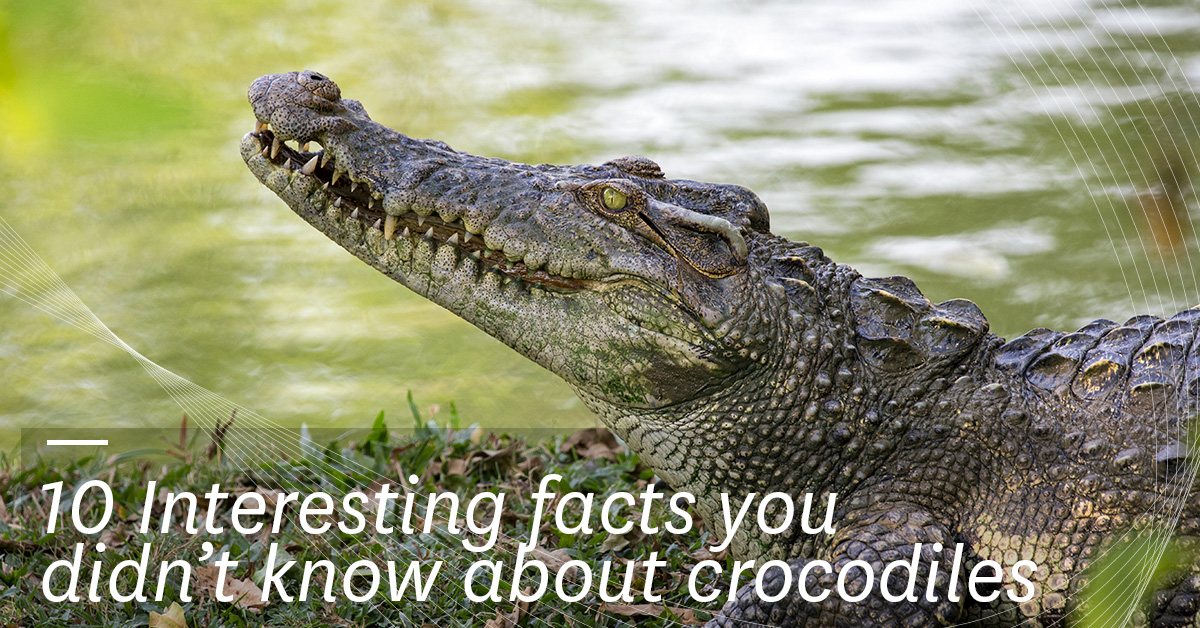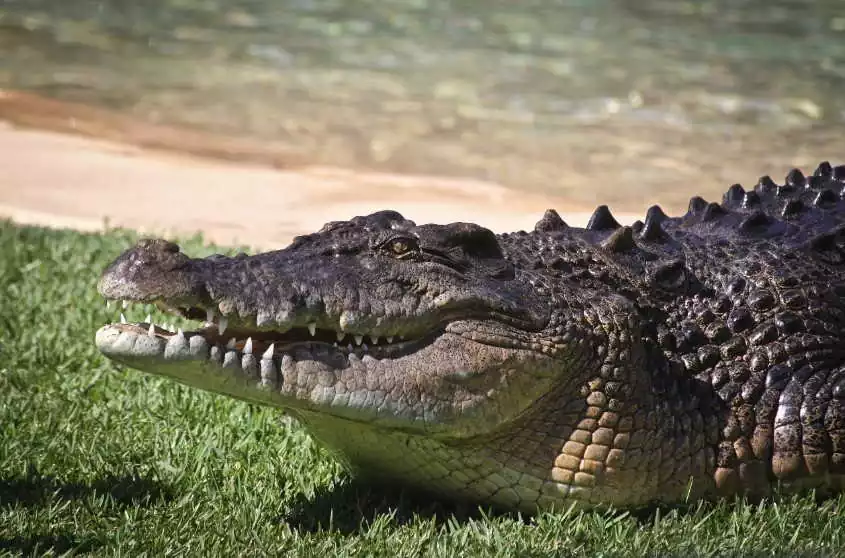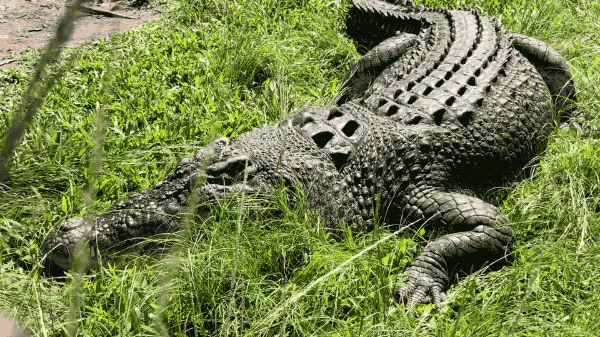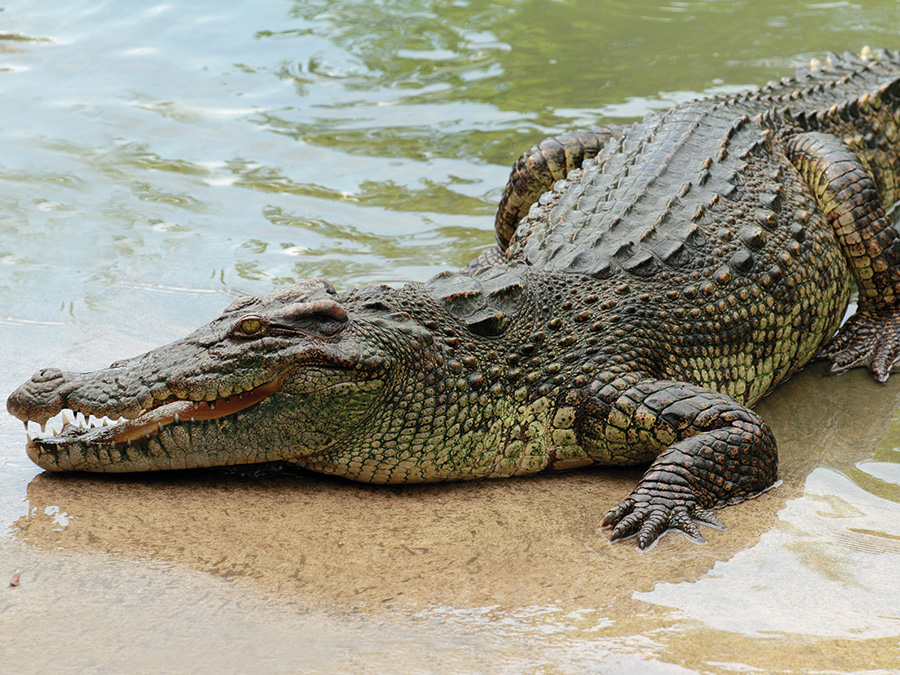Interesting Facts About the Characteristics of Crocodiles
The crocodile is a large aquatic reptile that lives in the Tropics of Africa, Asia, America and Australia. Alligators tend to congregate in freshwater habitats in rivers, lakes, wetlands, and sometimes brackish water (water that is saltier than freshwater, but not as salty as seawater). Some species, the Saltwater Crocodile, live mainly in coastal areas of Australia, Southeast Asia and the Pacific islands. Crocodiles are also known to go to sea. These creatures are an ancient lineage and are believed to have changed little since the time of the dinosaurs. Interesting information about the characteristics of crocodiles may surprise you.
Characteristics of Crocodiles
Crocodiles may seem prehistoric, but they are the most advanced reptile of our time. Unlike other reptiles, they have a four-chambered heart, diaphragm and cerebral cortex (a structure with different structural and functional properties in the vertebrate brain).
An alligator's physical characteristics allow it to be a successful hunter. They have a streamlined body that allows them to swim faster. Crocodiles also tuck their feet to their sides while swimming, which helps the crocodile swim faster by reducing water resistance.

Crocodiles have webbed feet that, although not used to propel the animal through water, allow it to make quick turns and sudden movements in the water or start swimming. Webbed feet are an advantage in shallow water, where alligators sometimes move around on foot.
These reptiles are very fast over short distances, even through water. Crocodiles have extremely strong jaws that can bite with 500 pounds of pressure per cm and sharp teeth to tear flesh . However, they cannot open their closed mouths. All large crocodiles also have sharp and strong claws. Alligators have limited lateral movement in their necks . Therefore, when you encounter a crocodile in an open field, even a small tree between you may be enough to protect yourself.
Sizes vary greatly between species, from the Pygmy Crocodile to the enormous Saltwater Crocodile. Large species can reach lengths of more than 5 or 6 meters and weights of over 1200 kilograms. Despite their large adult size, crocodiles start their lives at around 20 centimeters long. The largest species of crocodile, the world's largest reptile , is the Saltwater Crocodile, found in Northern Australia and Southeast Asia.
There is no reliable way to measure an alligator's age, although a variety of techniques can be used to obtain a reasonable estimate. The most common method is to measure growth rings in bones and teeth. Each ring corresponds to a change in growth rate between dry and wet seasons, which typically occurs once a year.
Behavioral Characteristics and Feeding Habits of Crocodiles
Crocodiles are ambush predators: they wait for fish or land animals to approach, then move to attack. As cold-blooded hunters , they can survive without food for long periods of time and rarely need to actively hunt. Despite their slow appearance, they are top predators in their environment. Various species have been observed attacking and killing sharks. Crocodiles feed mostly on invertebrates such as molluscs and crustaceans and vertebrates such as fish, reptiles and mammals, depending on the species .

COMMERCIAL REPRODUCTION
Crocodile breeding season is between January and May. For males, the onset of sexual maturity occurs when they reach a length of approximately 3 meters, and for females, when they reach a length of 2 to 2.5 meters. It takes about 10 years for both male and female alligators to reach these lengths under normal conditions. During the mating season , males attract females by hitting the water with their noses, spraying water from their noses, and making various vocalizations. The larger males of a community tend to be more successful in attracting females. After succeeding in attracting a female, the pair warm up and rub the undersides of their mandibles together.

After the crocodiles mate, the female crocodile lays approximately 20-40 eggs in a nest near the river bank once a year. It covers the nest with leaves and other vegetation. Decaying vegetation keeps the eggs warm and moist. The incubation temperature for crocodile eggs is 28-32 degrees, relative humidity is 95-100 percent, and the incubation period is 70-80 days. The female stays in the nest and guards the eggs until they hatch. The chicks make sounds when they are ready to hatch. The female crocodile opens the nest and carries the babies to the water. They immediately start feeding on crabs, shrimp and insects. Approximately half of the cubs die in the first year due to predators.
Yakare Cayman Crocodiles
The Yakare Caiman lives in places such as Argentina (north), Brazil (south), Bolivia (south) and Paraguay. It is found in a variety of habitat types, including wetlands, rivers, and lakes.
This species reaches 2.5 to 3 meters in length. The well-developed crocodile's skin layers contain bone deposits that form scales, plates, or other structures. Less ossified side parts are used in the leather trade. The main diet of Yakare Caimans consists of aquatic invertebrates (especially snails) and occasional vertebrates such as snakes and fish.

The female Yakare Caiman builds a mound nest into which usually 21 to 38 eggs are laid. Spawning occurs in the middle of the rainy season. Females guard the nest during incubation, but hunting pressure may affect this. As a result of increased hunting pressure, females tend to leave the nest after laying the eggs. Incubation occurs in March. The estimated wild population is between 100,000 – 200,000.
Repeal of the Endangered Species Act in the United States would severely impact this species. Illegal hunting in the 1970s and 1980s led to a decline in the species' numbers. Additionally, organized poaching in Brazil , for example, remains one of the biggest threats to the species, along with habitat destruction.
The Yakare Caiman can reproduce relatively quickly compared to other crocodile species. This helped reduce the effects of hunting pressure. Sustainable yield programs are operating in Paraguay, Bolivia, Argentina and Brazil, in the process of establishing such a program. This program needs to be further developed along with improved habitat management, education and wild population dynamics studies.












































